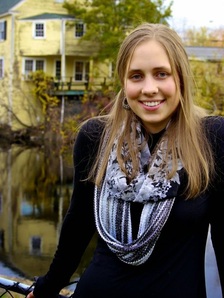
In this post on my blog tour celebrating the release of my newest novel, I have tackled the task of outlining how planet building works. To the best of my ability, at least. You can learn more on my website, or buy a copy of my newest release, The Wounded World, on Amazon.
Planet Building
The scientists on my planet, Sagitta, have the technology to build planets. I think this is cool, and it leaves a lot of room for creativity and pretty much infinite expansion of my universe.
If you remember, in the Hitchhiker’s Guide to the Galaxy they also had the capability to build planets (those pesky mice). In the movie, they showed hundreds of little men filling the oceans with water, spray-painting the mountains, and carefully carving out the houses and fences and people. That is not how it works in my books.
On Sagitta, scientists start with a piece of technology that looks a bit like a motherboard, but what it actually does is access the binary code of the universe. This is similar to DNA, in that when it is arranged, it determines the make-up and characteristics of the universe. By setting the indicators - or switching the switches - in a particular pattern, they can control the growth and development of atoms. They can make atoms of any element, and then piece them together in a planet-like configuration. They can also create biological elements - animals, plants, bacteria, and even speed up certain evolutionary processes.
Although they have the ability to do this, how it works is not entirely understood. Scientists are still studying the phenomenon.
The "why," on the other hand, is less confusing. The initial endeavor was a response to widespread societal fear of species extinction. The people of Sagitta wanted to be able to ensure that if something happened to their little corner of nature, they would still live on somewhere else. Then, political factions stepped in. If they didn't agree with their government, they believed they should be able to build their own civilizations elsewhere (and to some, the farther away the better). Although this met with some resistance at first, the government eventually realized that it might actually be easier to get rid of the troublemakers by sending them over to Beetlejuice rather than actually dealing with them.
Slowly, as the civilization grew, other reasons arose - specialized mining, specialized agriculture, evolutionary control, expanded economy. But Step 1 was always designing and building the planet.
Once a planet is designed and created, the responsible scientists hit GO, and the planet grows as atoms rearrange. Typically, they store the incomplete planet in an interdimensional space (see more on that here), so they can make sure they didn’t create something that is unstable and going to explode; if it does, it's usually contained. It also ensures that outside influences can't influence (asteroids, black holes, aliens) the planet's development. There is a small window of time where they can fix major issues and get the planet working properly. During this process (which can take anywhere from a few years to a few thousand years depending on the size and complexity of the planet), scientists work on gathering and creating bacteria, plants, and animals to make the planet livable. The terraforming process begins as the planet reaches 80% completion. This enables the plants and animals to learn to adapt to the specifics of the planet, and grow with it, as opposed to simply existing on it.
Once it works, they open up a Door on the other side of the interdimensional space and push the planet through. The location should have been chosen ahead of time, as certain details (mass, atmosphere, seasons, types of life) depend largely on where the planet is located. If programmed correctly, the planet will already be habitable, with the atmosphere built in, as well as plants and animals, and will just sink into orbit around it's star. If everything remains stable after it's in orbit (the atmosphere doesn't burn away, for example) then they will let people live on it.
If scientists can build something so complex and amazing, why, then, can’t they just make anything they want to, regardless of size? Why bother with planets? Well, first of all, the machine used to switch the switches is really expensive to operate. Between knowledge, energy, math, and materials, very few individuals or corporations would have the means, even for small objects. In addition, it’s easy to mess up. There are many small details, many complex math equations, and many specific elements and materials necessary. The more moving parts, the more potential for error. Finally, it's illegal. The government doesn't want just anyone creating stuff, planets, and Doors that can lead anywhere.
Though building planets is complex and dangerous, it allows the civilization to take control of their growth and development exactly how they want to.
You can read more by grabbing a copy of The Wounded World, or checking out some of the other stops along my blog tour:

To learn more, you can find her on Facebook, Twitter, or on her website.


 RSS Feed
RSS Feed
